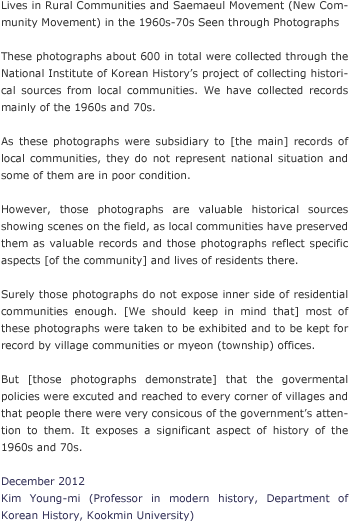After the coup d’etat, the Bak Jeonghui (Park Chung Hee) government was greatly interested in increasing agricultural production. This was not only to solve the urgent national issue of serious food shortages, but overcoming poverty was an important justification for the military coup itself. In the 1960s agricultural production gradually increased. This was largely due to the expanded distribution of fertilizer as new plants opened one after the other, the preparation of irrigation facilities and the consolidation of arable land. The increased production of this period can be seen as a result of putting in place a system of agricultural guidance and rationalizing inputs essential for production rather than something due to improved plant breeds. However, as the scale of the industrialized economy increased, rice gradually became scarce.
-
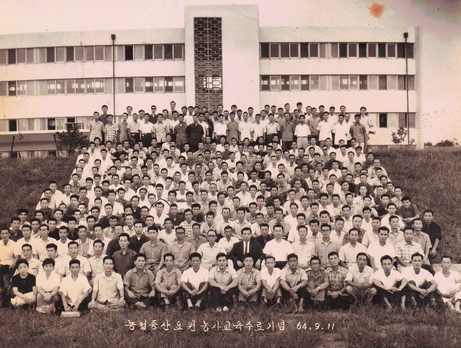 Agricultural training of agricultural leaders to increase production
Agricultural training of agricultural leaders to increase production
Commemorative photograph at the completion of agricultural education for leaders to increase production. Photograph owned by Han Gwanghui, of Buk-myeon (town), Hwasun-gun (county), Jeollanam-do (province).
-
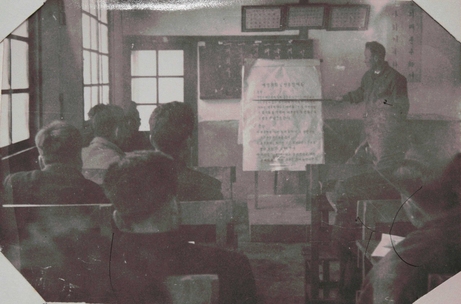 Education to increase production
Education to increase production
Education to increase production and incomes of farming households in Daegok-ri (village) Ugok-myeon (town), Goryeong-gun (county), Gyeongsangbuk-do (province). Photograph owned by New Village branch office, Goryeong-gun. 1969.
-
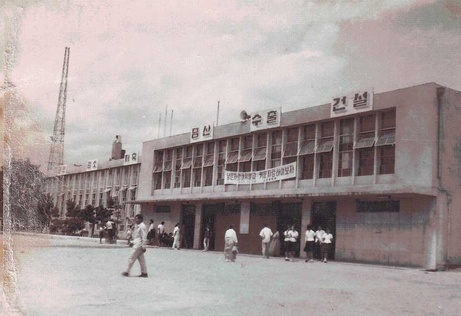 Slogans to increase production, exports and construction at Suncheon Station
Slogans to increase production, exports and construction at Suncheon Station
Suncheon Station in 1966. Along with exports and construction, increasing production was an important task for the Bak Jeonghui government. Photograph owned by Han Gwanghui, of Buk-myeon, Hwasun-gun, Jeollanam-do.
-
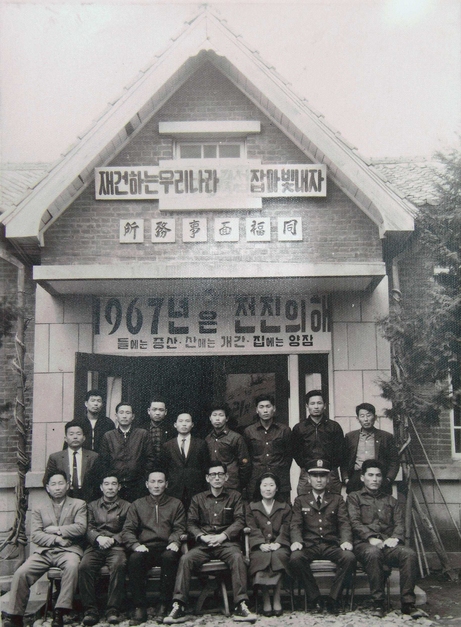 A Town Hall in Hwasun-gun, 1967.
A Town Hall in Hwasun-gun, 1967.
Slogan reads “Increasing production in the fields, cultivation in the mountains, and silk production in the home”. Photograph owned by Mun Jeseon, of Dongbok-myeon (town), Hwasun-gun.
-
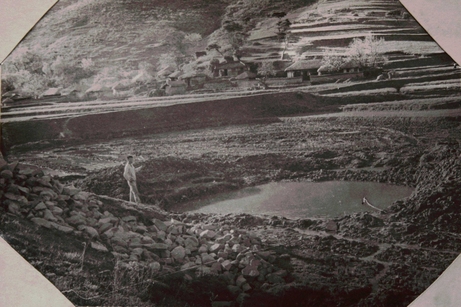 Well dug to use ground water for agriculture
Well dug to use ground water for agriculture
Well in Bugang village, Yajeong 2(i)-dong (town), Ugok-myeon, Goryeong-gun. The deputy town mayor is making a site inspection. The distribution of water pumps and improvement of irrigation facilities was the background to increasing food production in the 1960s. Photograph owned by New Village branch office, Goryeong-gun. 1969.
-
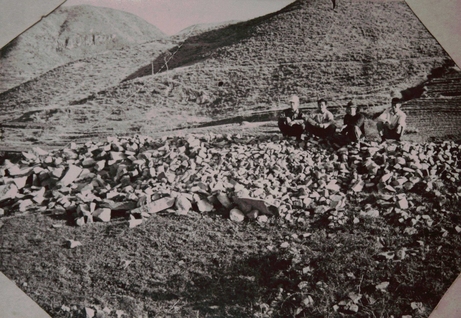 Transporting rocks to lay in the well
Transporting rocks to lay in the well
Bugang village, Yajeong 2(i)-dong, Ugok-myeon, Goryeong-gun. 1969. Photograph owned by New Village branch office, Goryeong-gun.
-
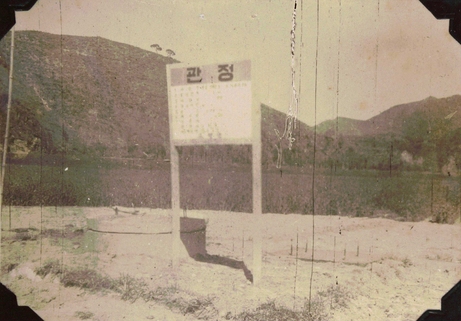 Developing groundwater in Maechon-dong (town), Ssangnim-myeon, Goryeong-gun
Developing groundwater in Maechon-dong (town), Ssangnim-myeon, Goryeong-gun
1969. Photograph owned by Ssangnim-myeon Town Hall, Ssangnim-myeon,Goryeong-gun, Gyeongsangbuk-do.
-
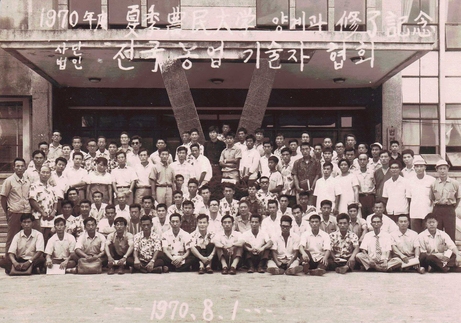 Commemorating the completion of poultry course at a farming summer school
Commemorating the completion of poultry course at a farming summer school
New farming methods were an important concern for young farmers to overcome poverty. 1970. Photograph owned by Kim Sang-un, of Iseo-myeon (town), Hwasun-gun, Jeollanam-do.
-
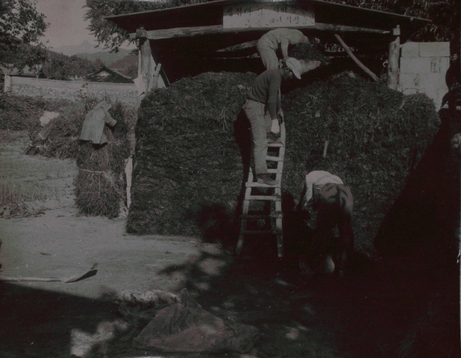 Making compost
Making compost
At a time when chemical fertilizers were scarce, the production of the natural fertilizer “compost” made through decomposing grass was an important policy to increase production that the government promoted to farmers. The slogan “Increasing each household’s compost production increases production in each field” is hung above the compost heap. The work to increase compost in Sinchon-dong (town), Ssangnim-myeon, Goryeong-gun. Photograph owned by Jeon Haegyun. 1970s.
-
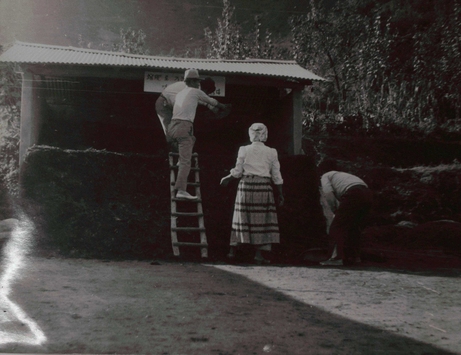 Adjusting the compost heap
Adjusting the compost heap
As in the former photograph, this is a view of the work to increase compost in Sinchon-dong, Ssangnim-myeon, Goryeong-gun. Photograph owned by Jeon Haegyun. 1970s.
-
 Grass, a raw material for fertilizer
Grass, a raw material for fertilizer
The partial slogan “Put 25** on each Ban (group) and continue self-sufficiency in food” is visible. A fertilizer of natural compost was made by decomposing this grass with manure. Photograph owned by Jeon Haegyun of Sinchon-dong, Ssangnim-myeon, Goryeong-gun, Gyeongsangbuk-do. 1970s.
-
 Education on village funds in Ssangnim-myeon, Goryeong-gun
Education on village funds in Ssangnim-myeon, Goryeong-gun
In order to connect increased incomes to saving, increasing production and saving money were emphasized as two sides of the same coin. 1972. Photograph owned by Ssangnim-myeon Town Hall, Goryeong-gun, Gyeongsangbuk-do.













